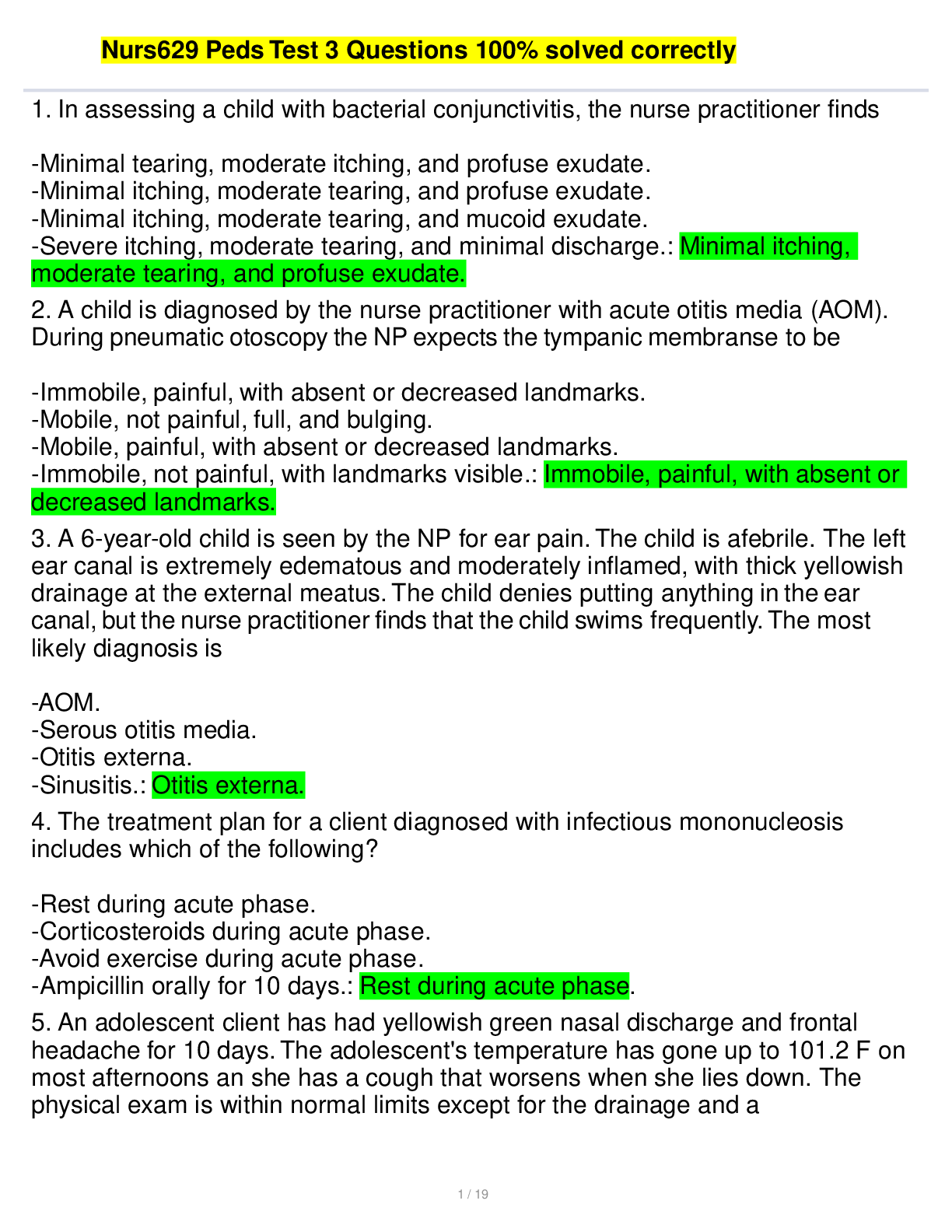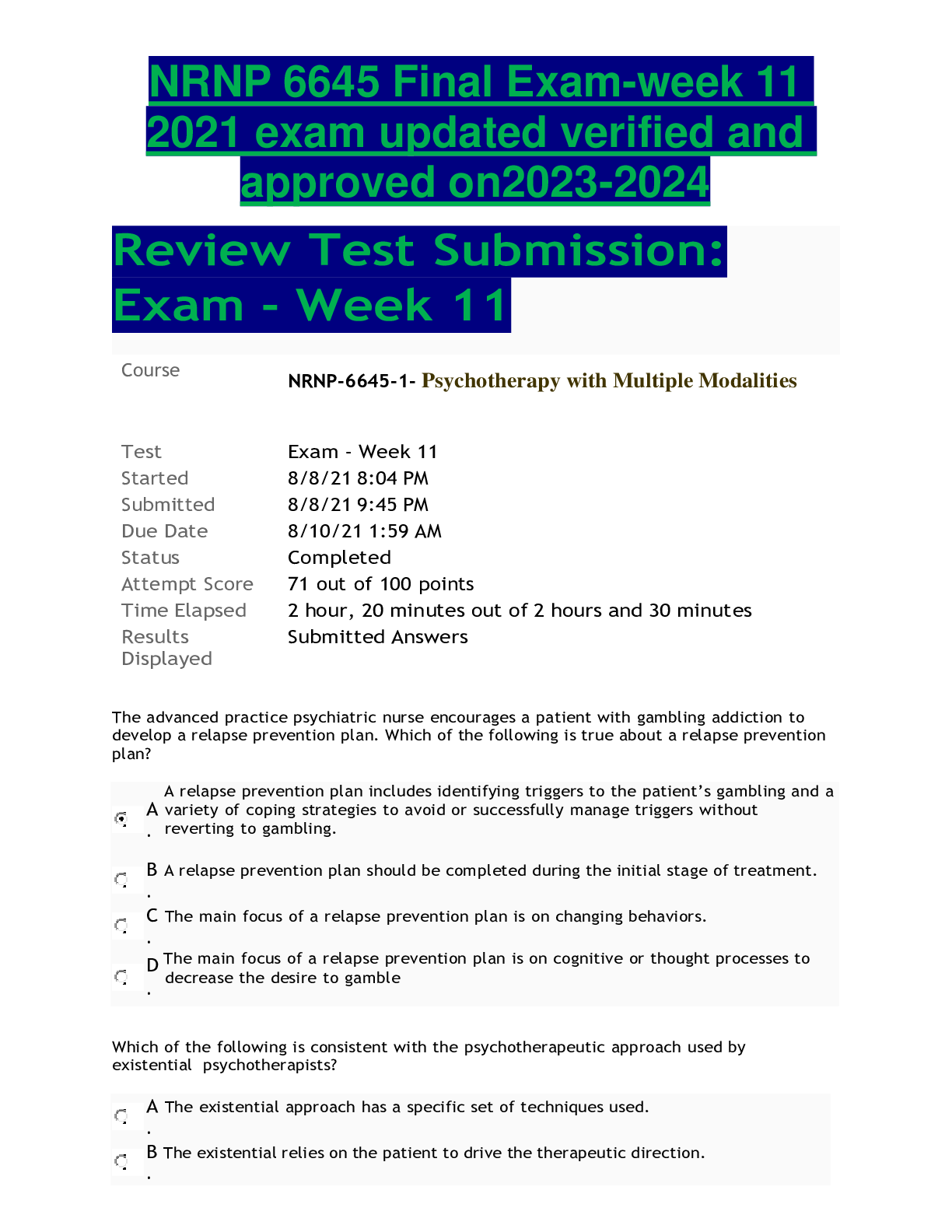Health Care > EXAM > ABFM ITE 2021 Exam Updated completely 100% solved correctly Grade A+ (with Explanation) 200Q (All)
ABFM ITE 2021 Exam Updated completely 100% solved correctly Grade A+ (with Explanation) 200Q
Document Content and Description Below
ABFM ITE 2021 Exam Updated completely 100% solved correctly Grade A+ (with Explanation) 200Q -A 67-year old male sees you for a Medicare annual wellness visit. He tells you that his best friend had a... stroke and he asks about his risk for stroke. He has a family history of cardiovascular disease in his father, who had a myocardial infarction at age 65 and died from a thrombotic stroke at age 71. The patient exercises regularly and has a BMI of 27 kg/m2. His only current medical condition is hyperlipidemia, and his cholesterol level is at goal on rosuvastatin (Crestor), 10 mg daily. He also takes aspirin, 81 mg daily. His blood pressure 125/78 mmHg. Based on US Preventive Services Task Force guidelines, which one of the following would be most appropriate at this time? A. No additional testing for stroke risk B. Auscultation for carotid bruits C. Carotid duplex ultrasonography D. Magnetic resonance angiography E. CT angiography of the carotid arteries {{Correct Ans- ANSWER: A No additional testing for stroke risk Carotid artery disease affects extra cranial carotid arteries and is caused by atherosclerosis. Explanation This patient is asymptomatic and has no history of an ischemic stroke, neurology symptoms referable to the carotid arteries such as amaurosis fugal, or TIA. He has risk factors for cardiovascular disease (age, male sex, hyperlipidemia_, but the USPSTF recommends against specific screening asymptomatic carotid artery stenosis (D recommendation) which a low prevalence in the general adult population. Stroke is a leading cause of disability and death in the US, but asymptomatic carotid artery stenosis causes a relatively small portion of strokes. Auscultation of the carotid arteries for bruits has been found to have poor accuracy for detecting carotid stenosis and is not a reasonable screening approach. Appropriate modalities for detecting carotid stenosis include carotid duplex ultrasonography, magnetic resonance angiography, and computed tomography, but there are not recommended for screening asymptomatic patients. -A 28 year old female presents for evaluation of nasal congestion, sneezing, watery eyes, and postnasal drip. This has been an intermittent issue for her every spring and she would like to manage it more effectively. Which one of the following treatments has been shown to be the most effective and best tolerated first-line therapy for this patient's condition? A. A leukotriene receptor agonist B. Intranasal corticosteroid monotherapy C. Intranasal corticosteroids plus an oral antihistamine D. Inhaled corticosteroids E. Annual triamcinolone injections {{Correct Ans- ANSWER: B Intranasal corticosteroid monotherapy Explanation This patient has seasonal allergic rhinitis. A joint guideline statement from the American Academy of Allergy, Asthma, and Immunology/American College of Allergy, Asthma and Immunology Joint Task Force on Practice Parameters recommends that mono therapy with intranasal corticosteroids would be prescribed initially in patients equal to or more than 12 years of age rather than combined treatment with oral antihistamines because data has not shown an additional benefit to adding the antihistamine. Higher patient adherence and tolerance and fewer side effects were seen with the mono therapy regimen. High quality evidence indicates that intranasal corticosteroids were more effective than leukotriene receptor antagonists. Inhaled corticosteroids and triamcinolone injections are not appropriate first line options for the treatment of seasonal allergic rhinitis -A 68 year old female presents with a 2 month history of watery diarrhea. She has not had any blood or pus in her stools, and the stools are not oily. She has not had any history of fever, chills, or weight loss, and has not traveled recently. She smokes one pack of cigarettes per day. Her medications include ibuprofen, sertraline and pantoprazole. A CBC, metabolic panel, CRP, IgA anti tissue transglutaminase level, total IgA level, and stool guaiac test are all normal. Which one of the following tests would be mostly likely to yield a diagnosis? A. C difficile toxin B. Colonoscopy C. Fecal calprotectin D. A stool culture E. Stool exam for ova and parasites {{Correct Ans- ANSWER: B Colonoscopy Explanation In patients with chronic nonbloody diarrhea, the differential diagnosis includes microscopic (lymphocytic or collagenous) colitis. The mucosa appears normal on colonoscopy but a biopsy will show lymphocytic infiltration of the epithelium. The etiology is unknown but there are several risk factors to consider, including older age, female sex, and smoking status. Drugs with a high level of evidence causing microscopic colitis include NSAIDs, PPIs, sertraline, acarbose, aspirin, and ticlopidine. C. diff should be suspected in individuals who have taken antibiotics in the past 3 months. Fecal calprotectin is elevated in inflammatory diarrhea such as Crohn's disease or ulcerative colitis. A stool culture would be indicated if there is a suspicion of an infectious bacterial diarrhea such as Shigella or Salmonella, but these bacteria tend to cause bloody diarrhea. Checking for a parasitic infection should be considered for patients with a history of recent travel or exposure to unpurified water. -A 23 year old male with opioid use disorder requests buprenorphine therapy. He is still actively using immediate release oxycodone and he took a dose 2 hours ago. This patient should begin buprenorphine induction A. Now B. In 2 hours C. 8-12 hours after his last opioid use D. 24 hours after his last opioid use E. 1 week after his last opioid use {{Correct Ans- ANSWER: C 8-12 hours after his last opioid use Explanation Buprenorphine is a partial opioid agonist. In order to reduce the risk of precipitated withdrawal, buprenorphine induction should begin once the patient is exhibiting signs of mild to moderate withdrawal, usually 8-12 hours after the last opioid use. Waiting until a patient goes through a full withdrawal increases the chances that the patient will revert back to using opioids. -A 45 year old left hand dominant female presents to your office with a lump on her hand. She first noticed the lump 2 weeks ago and thinks it has gotten bigger. She does not recall any injury. She has not had any numbness, weakness, or tingling. She has minimal discomfort when she presses on the lump, and it does not affect her activity. On examination her left wrist is neurovascularly intact. Which one of the following management options would you recommend? A. Re-examination if she develops numbness, weakness, or increased pain B. Immobilization of the wrist for 6 weeks and then re-examination C. Aspiration of the lesion D. Aspiration and injection of the lesion with a corticosteroid E. Referral for excision of the lesion {{Correct Ans- ANSWER: A. Re-examination if she develops numbness, weakness or increased pain Explanation This patient has a ganglion cyst, which is common and resolves spontaneously in 50% of cases, and watchful waiting would be most appropriate at this time. Treatment is indicated if the cyst is causing significant symptoms such as pain, numbness, or weakness, or for cosmetic symptoms. Aspiration of the lesion is the initial treatment, although recurrence may occur in 85% of cases. Immobilizing the wrist with a splint or brace is sometimes helpful in the short term if the patient is bothered by the symptoms, but immobilization does not provide lasting relief and could cause muscle atrophy. Corticosteroid injections have not shown any benefit. Referral for excision is appropriate if there has been no improvement. Patients should be advised that there is a 10%-15% recurrence rate even after excision. -A 57 year old female with diabetes mellitus comes to your office for a routine follow up. Her current medications include metformin 1000 mg twice daily. She tells you that she does not exercise regularly and finds it difficult to follow a healthy diet. HbA1c today is 7.5%. She does not want to add medications at this time, but she does want to het her HbA1c below 7%, which is the goal that was previously discussed. Which one of the following would be the most effective way to improve glucose control for this patient. A. Discuss the components of a healthy diabetic diet and encourage her to follow it more closely. B. Discuss the importance of regular exercise and encourage her to exercise 30-45 minutes daily. C. Recommend that she check her glucose level 1-3 times daily to help determine what adjustments need to be made. D. Start her on an additional medication E. Refer her to a diabetes educator for medical nutrition therapy. {{Correct Ans- ANSWER: E. Refer her to a diabetes educator for medical nutrition therapy Explanation Counseling by a diabetic educator or a team of educators for medical nutrition therapy lowers HbA1c by 0.2-0.8 percentage points in patients with type 2 diabetes. While a healthy diabetic diet and regular exercise is important, simply reminding the patient of that fact is not likely to be as successful as comprehensive diabetic education. According to the Society of General Internal Medicine in the Choosing Wisely campaign, patients with type 2 diabetes who are not on insulin therapy should not check their blood glucose level daily. An additional medication will likely decrease HbA1c, but this patient has expressed a desire to avoid additional medication, is near goal, and is not currently managing her diabetes with adequate lifestyle changes, so it would be appropriate to respect her wishes and pursue proven interventions that do not require medication. [Show More]
Last updated: 2 years ago
Preview 1 out of 164 pages
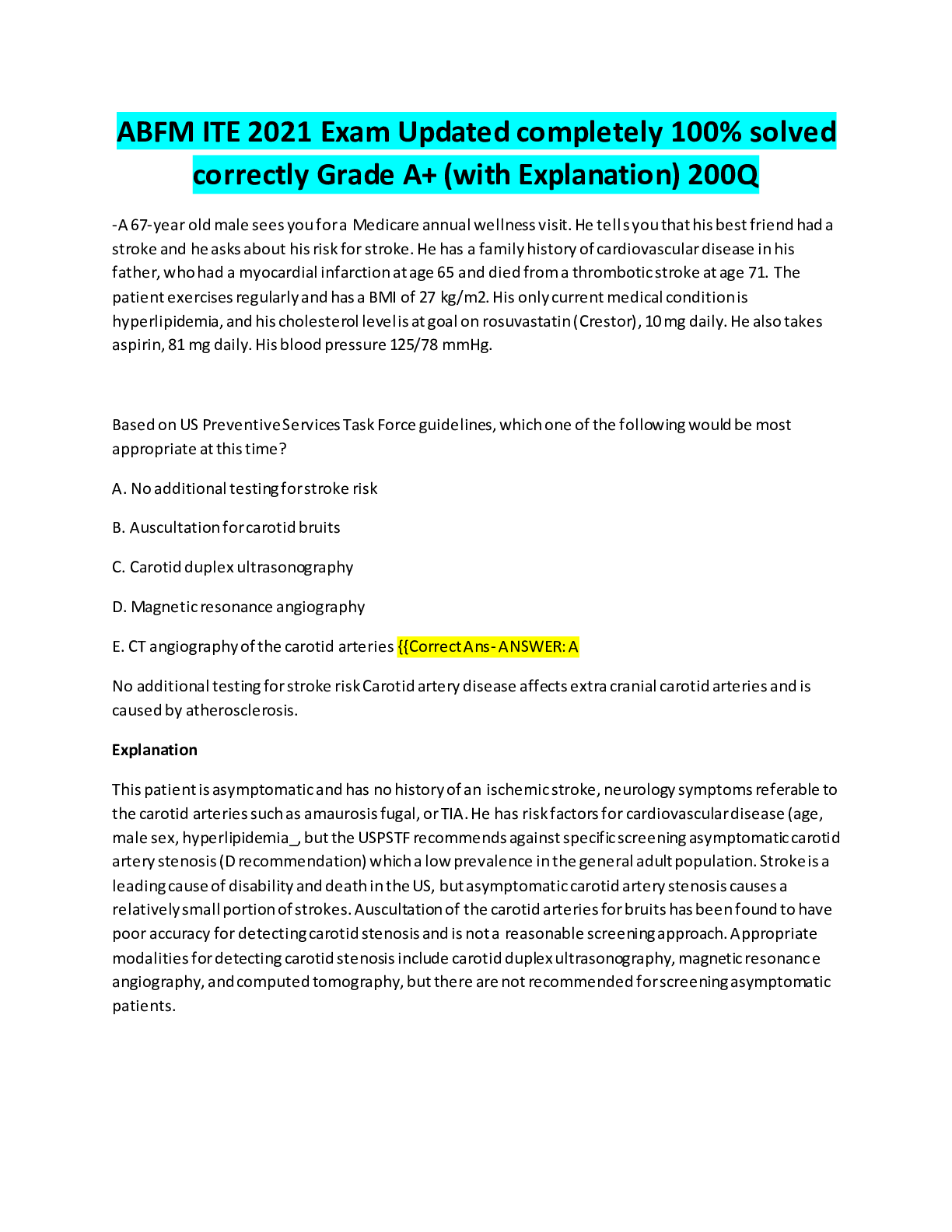
Buy this document to get the full access instantly
Instant Download Access after purchase
Buy NowInstant download
We Accept:

Reviews( 0 )
$6.00
Can't find what you want? Try our AI powered Search
Document information
Connected school, study & course
About the document
Uploaded On
Sep 16, 2022
Number of pages
164
Written in
Additional information
This document has been written for:
Uploaded
Sep 16, 2022
Downloads
0
Views
83

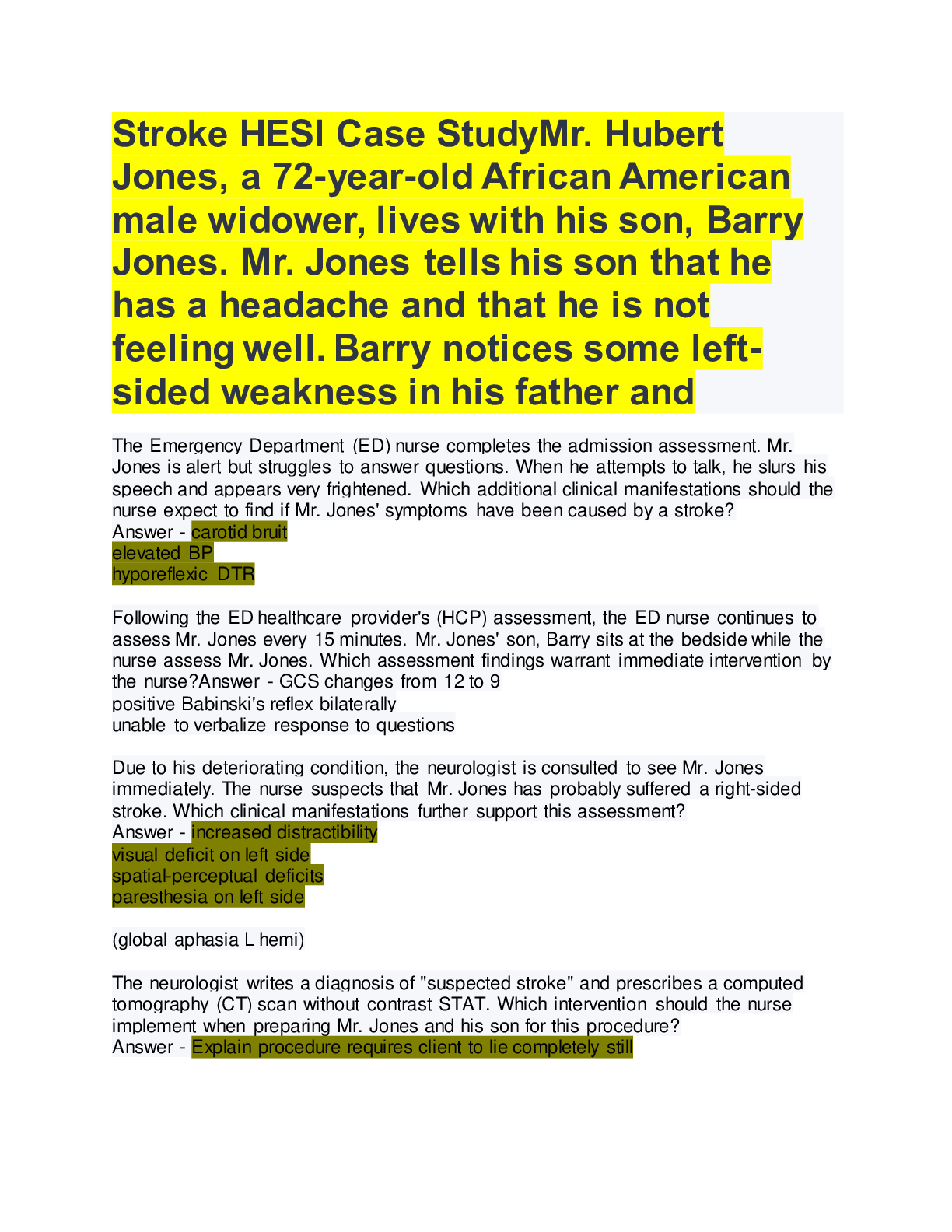
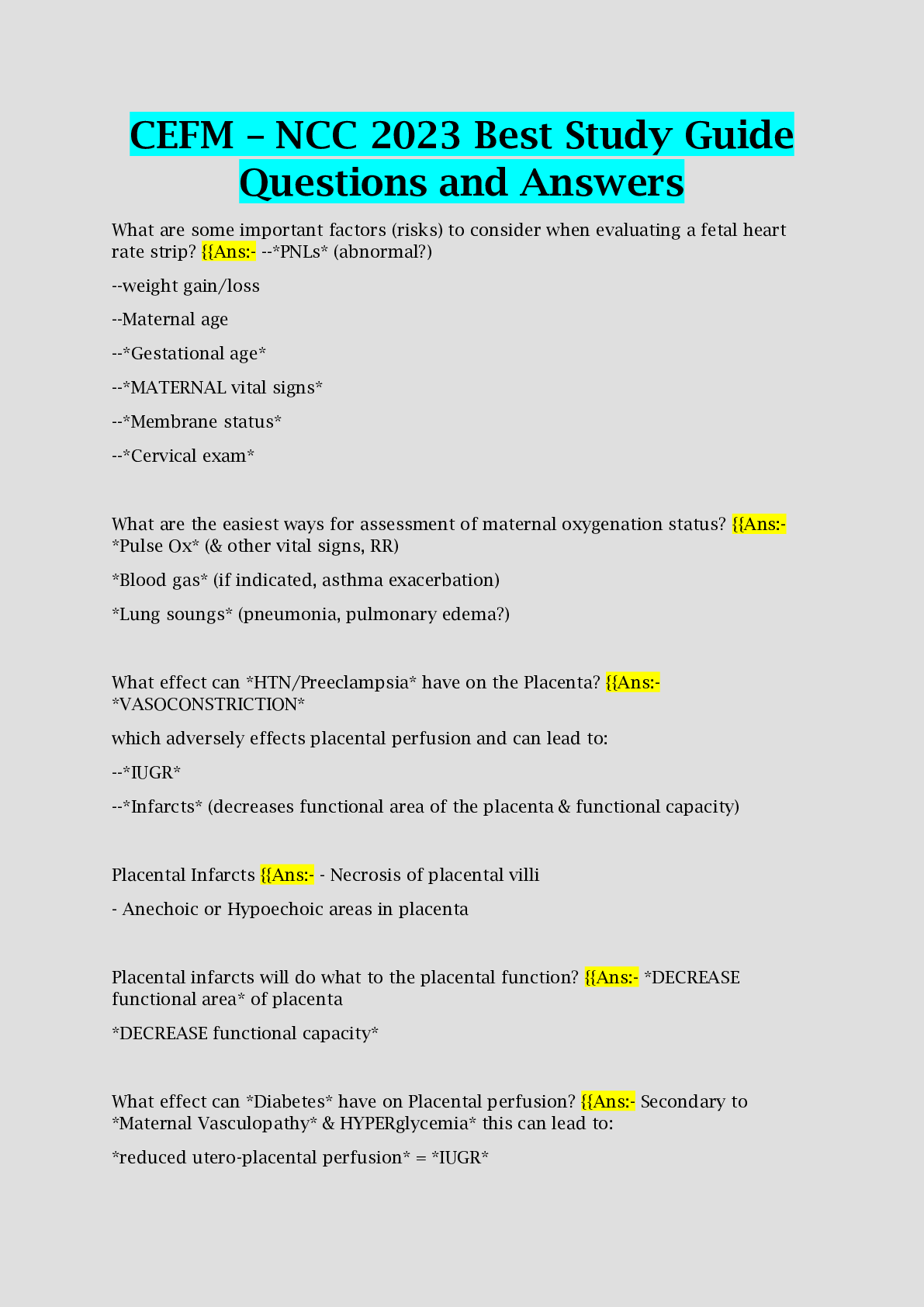
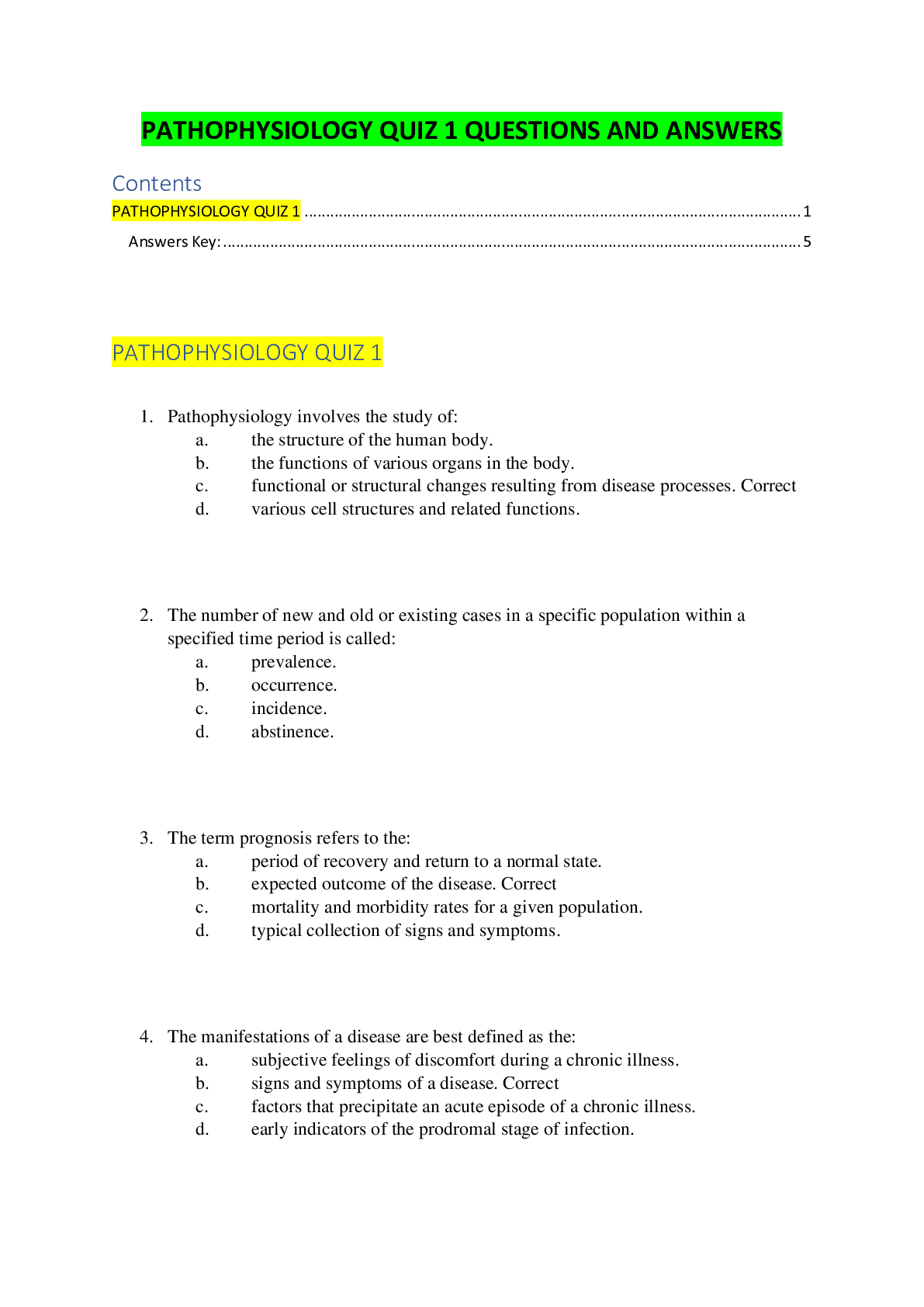
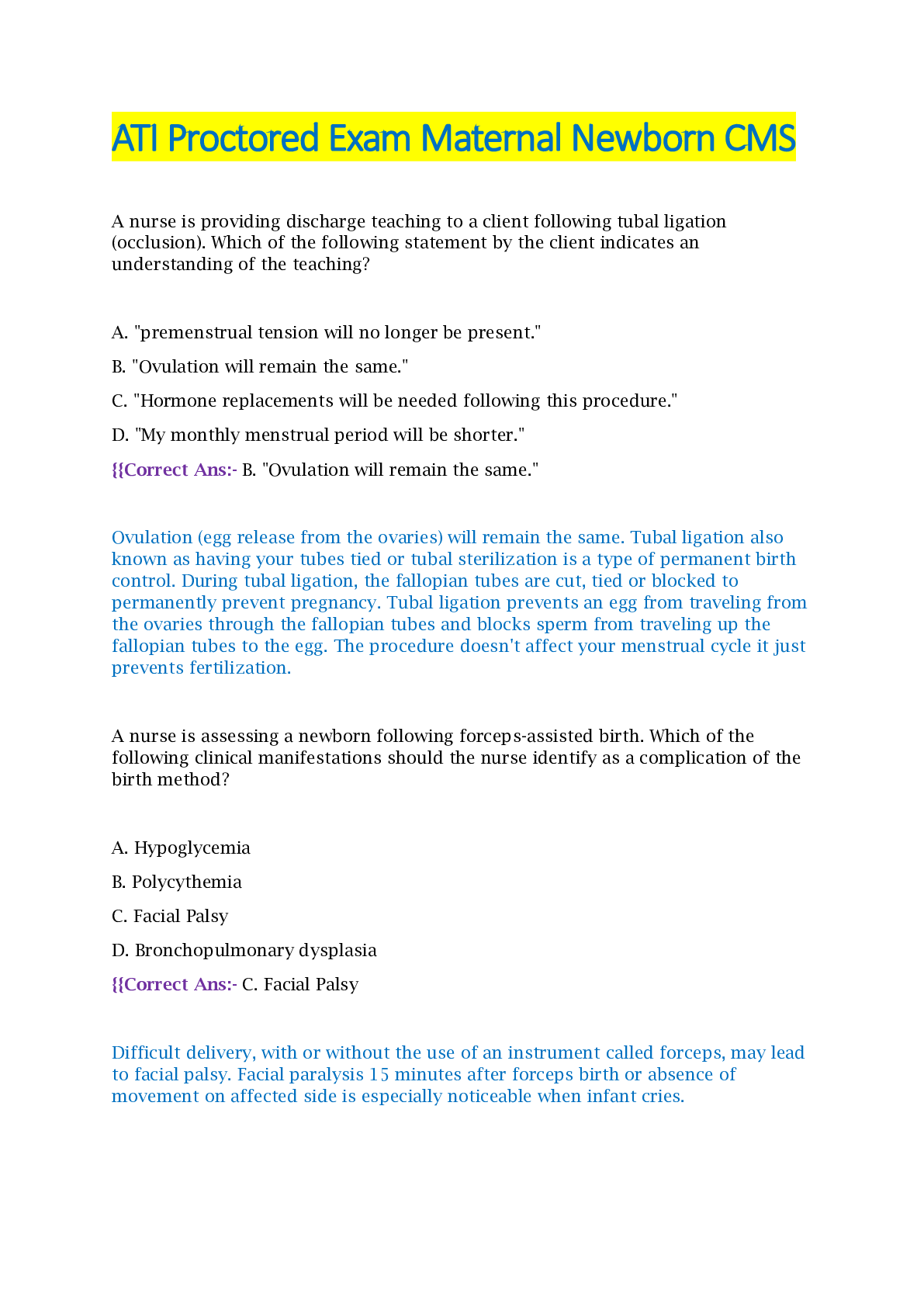
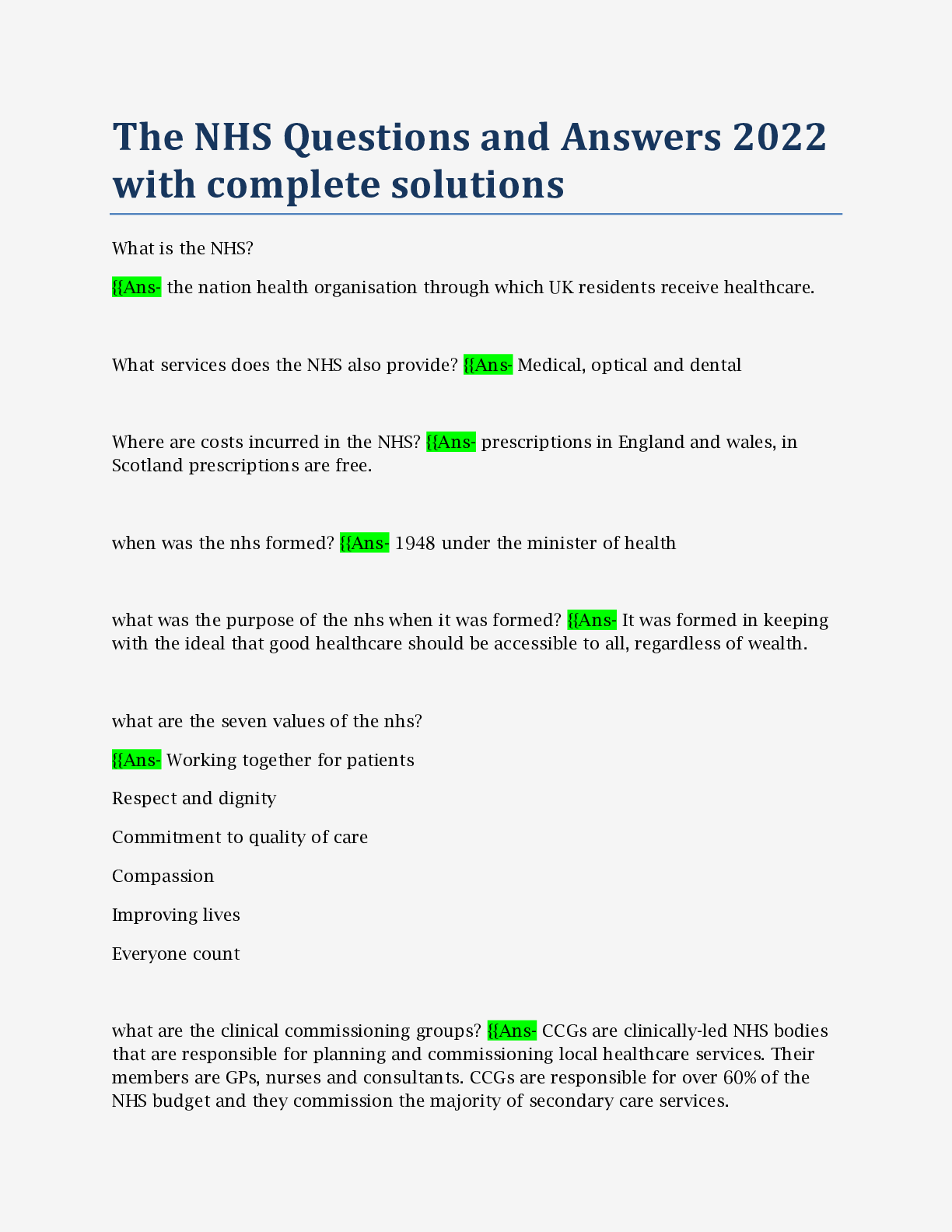
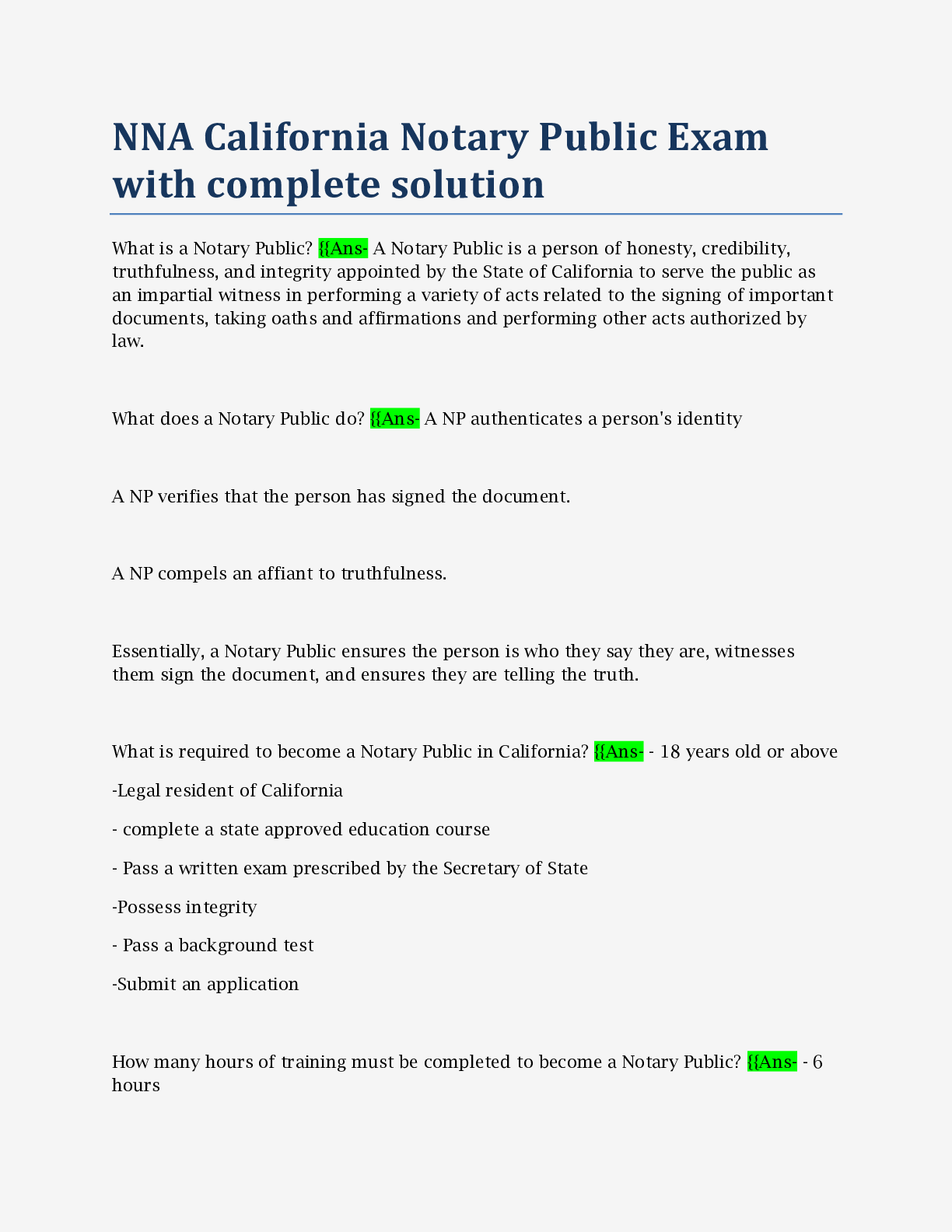

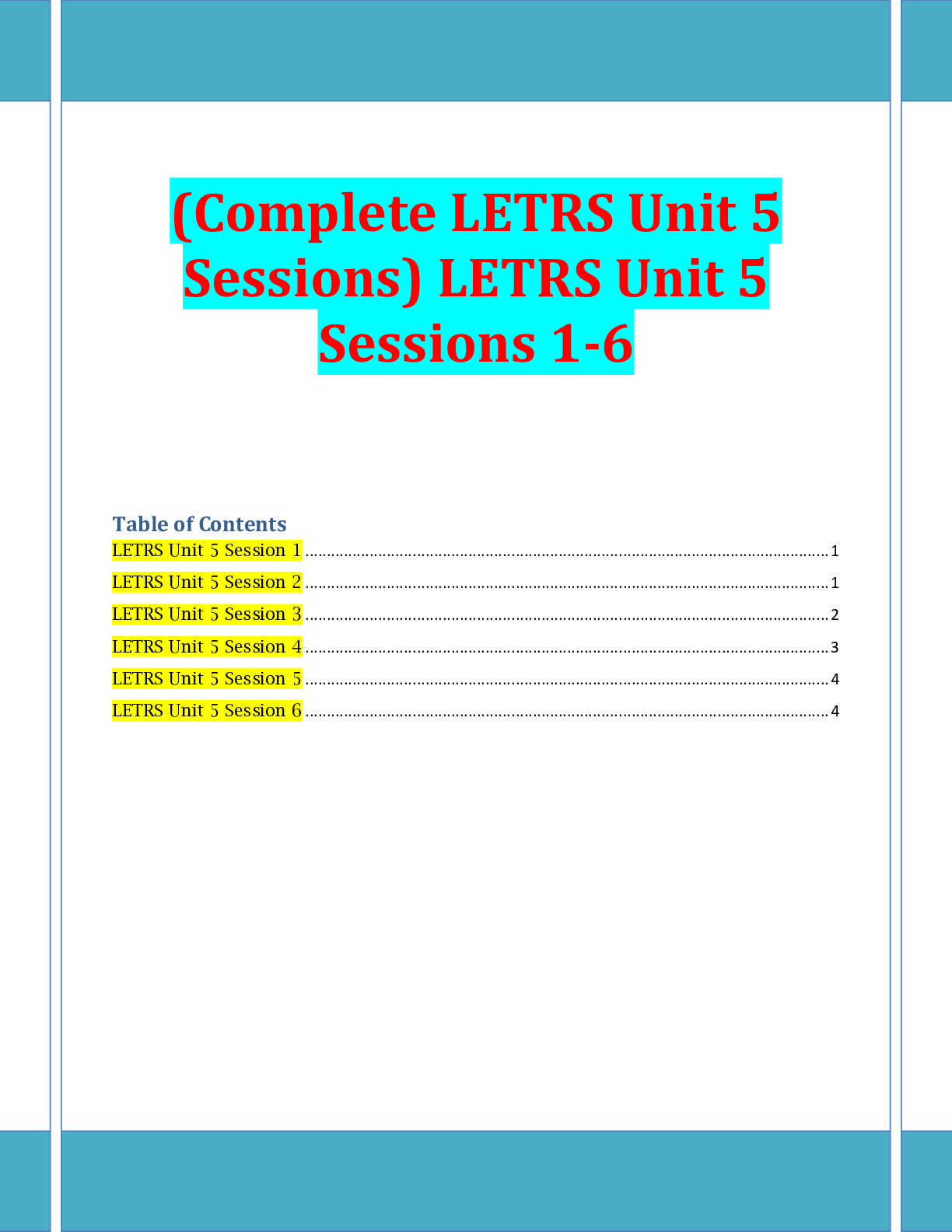
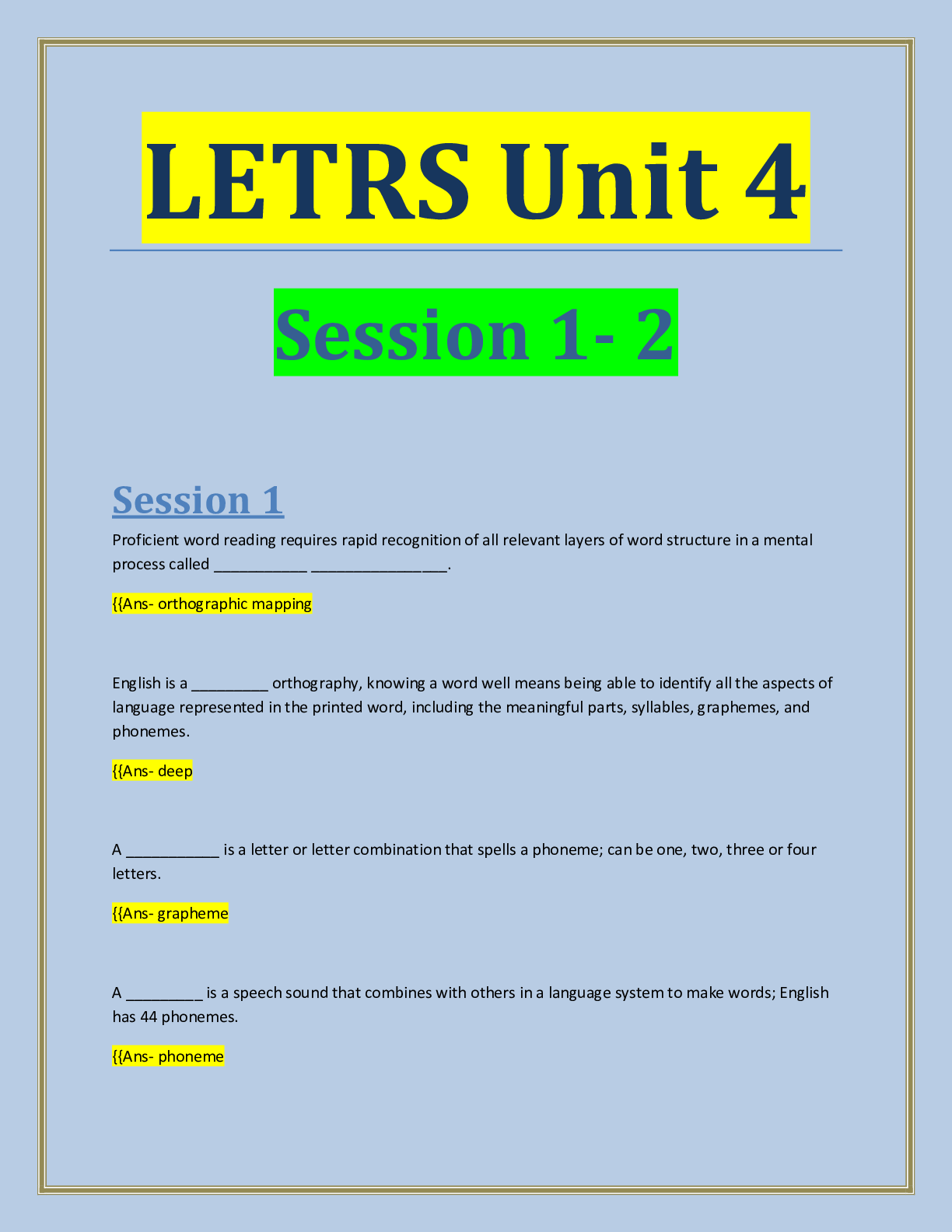
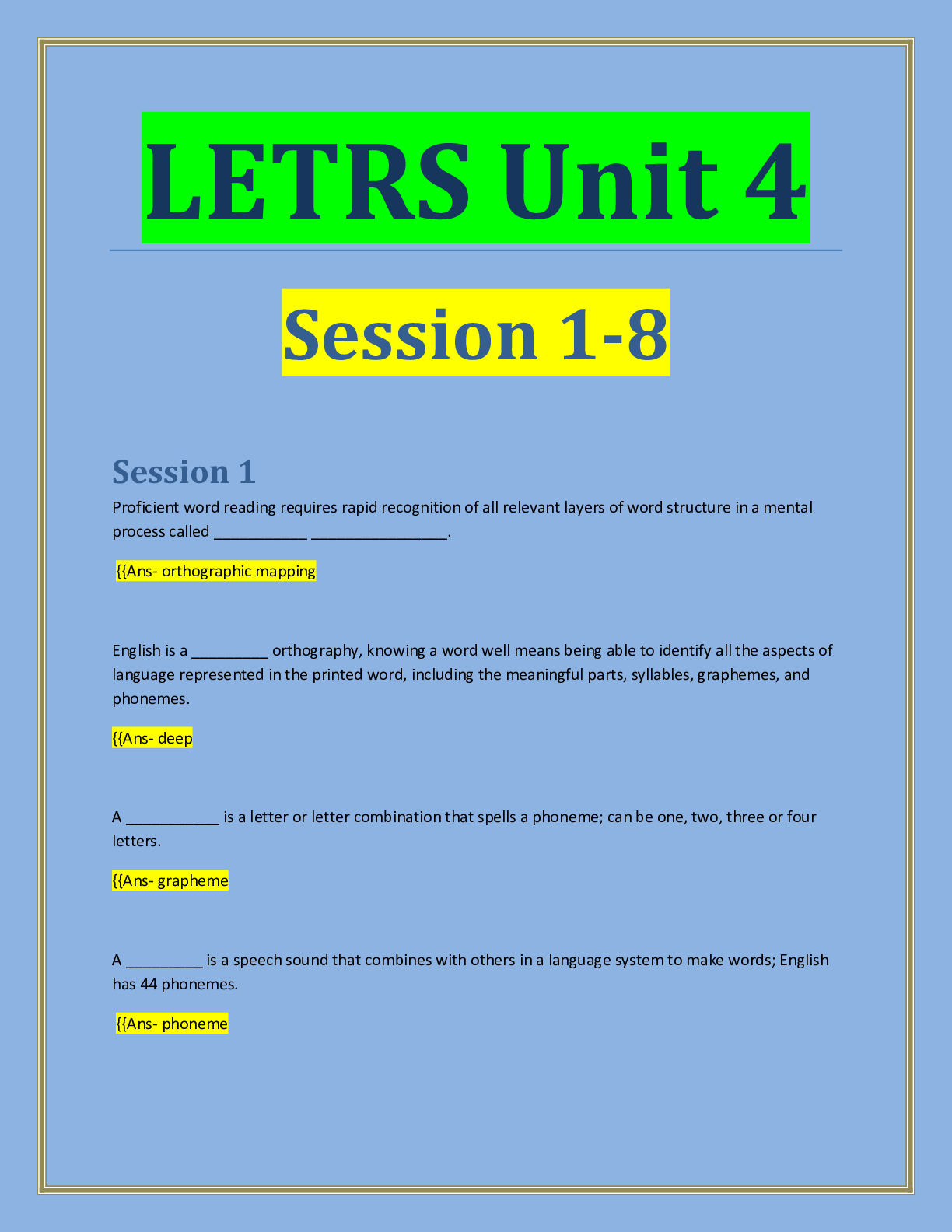

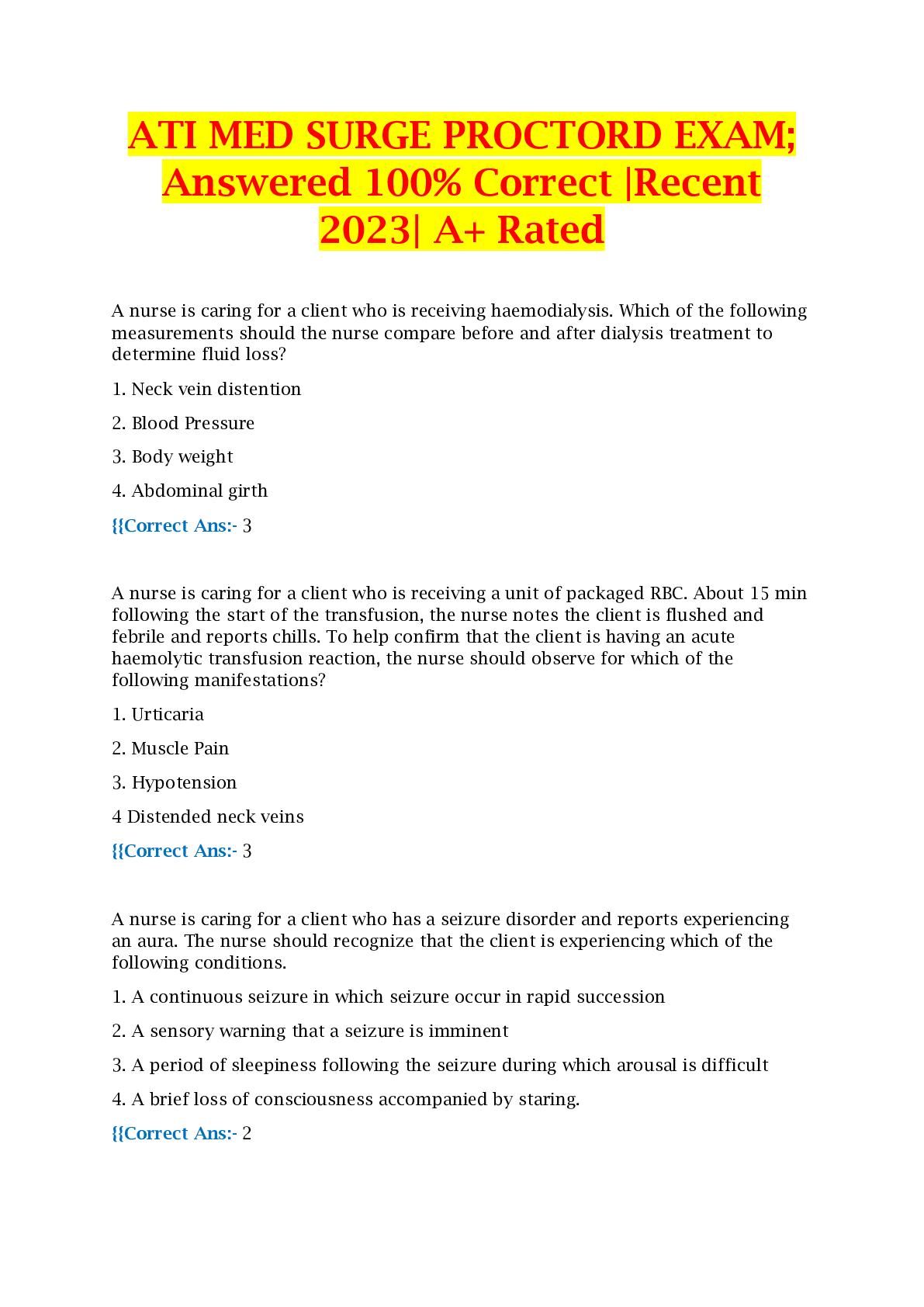
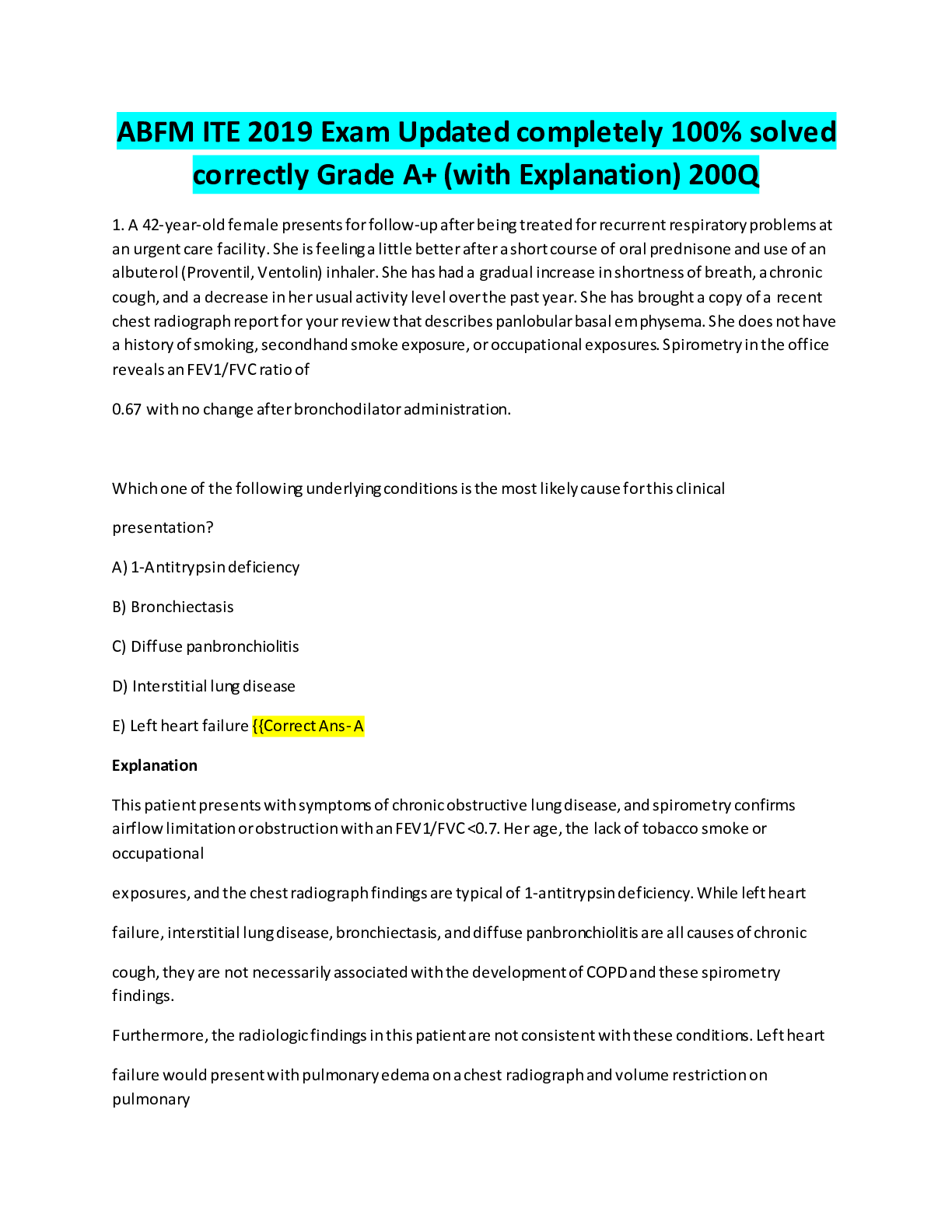
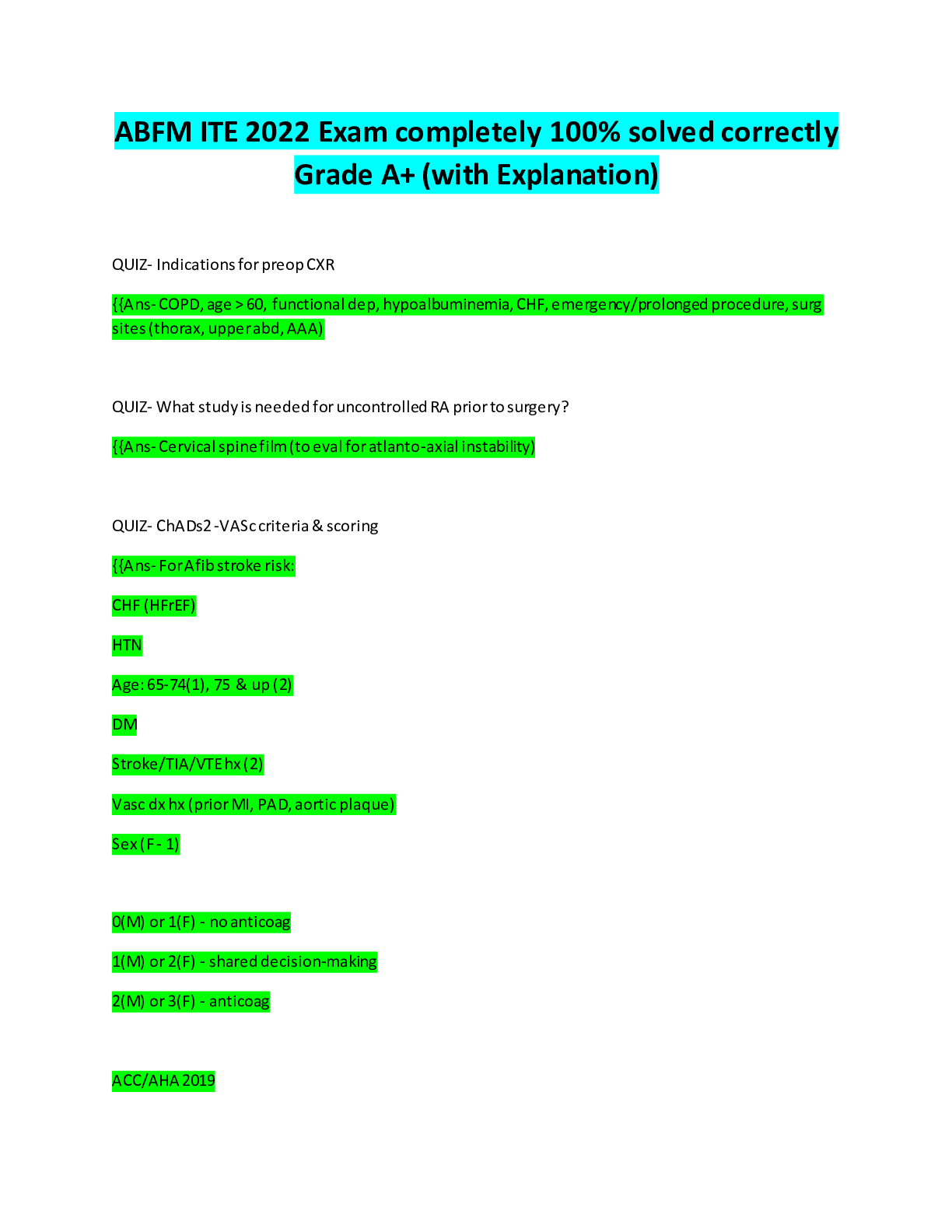
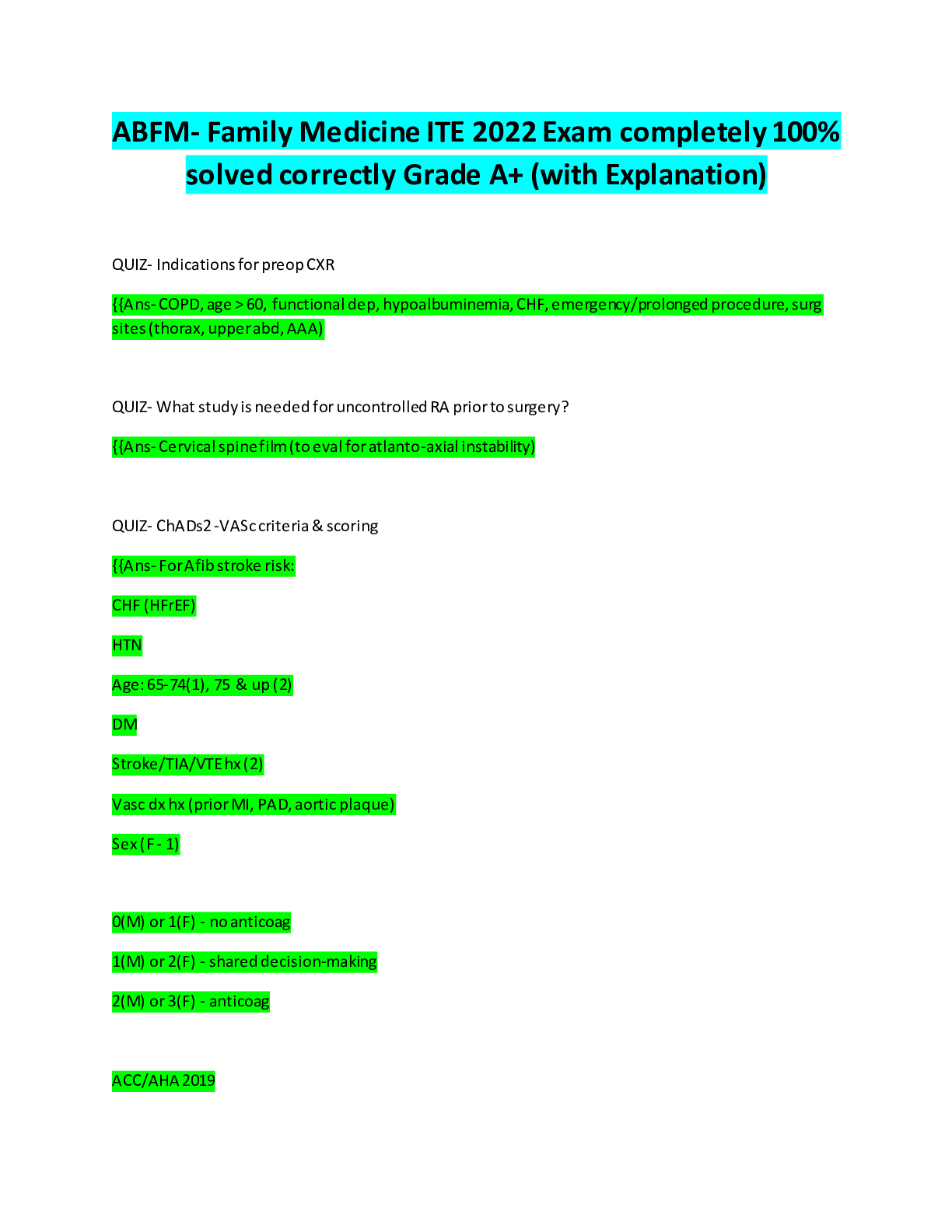
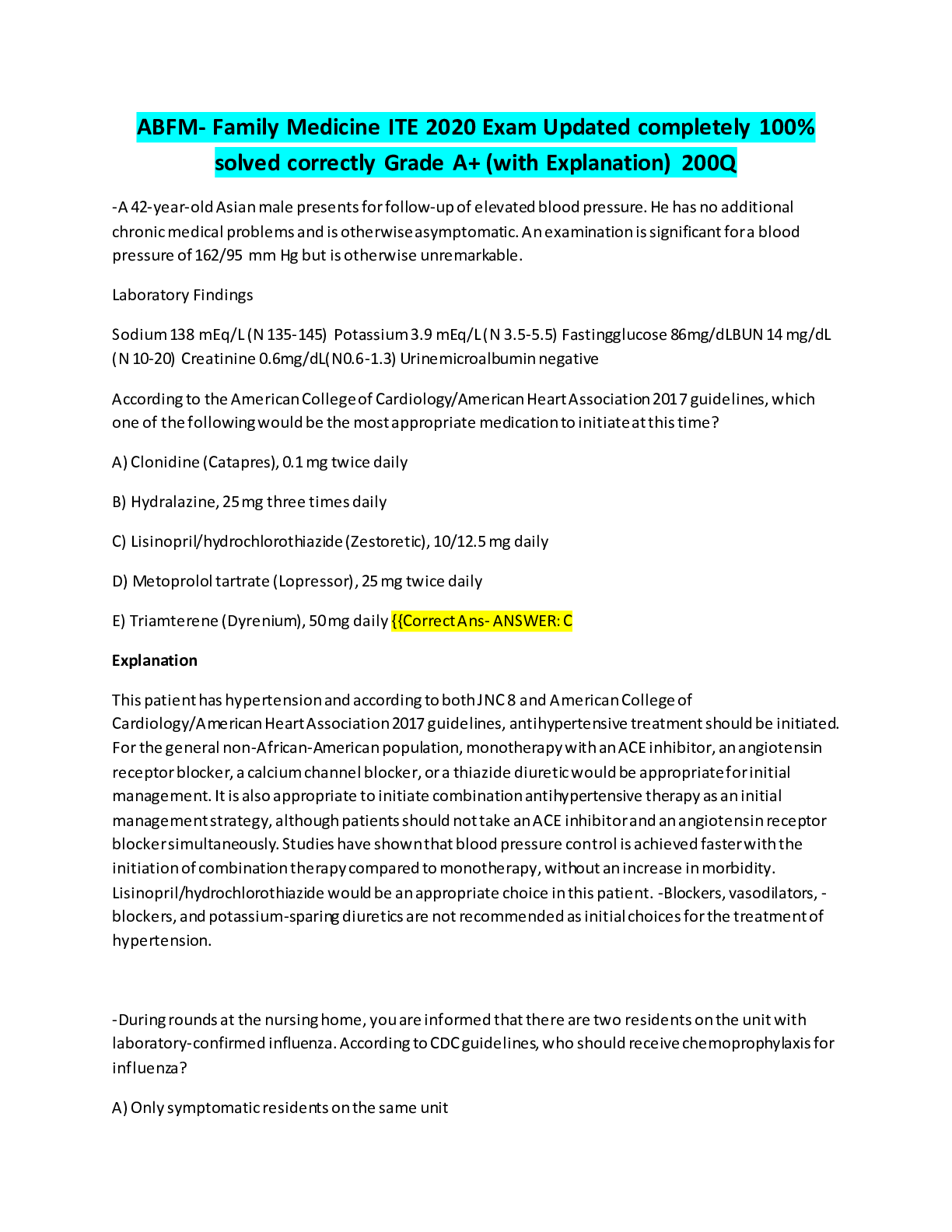
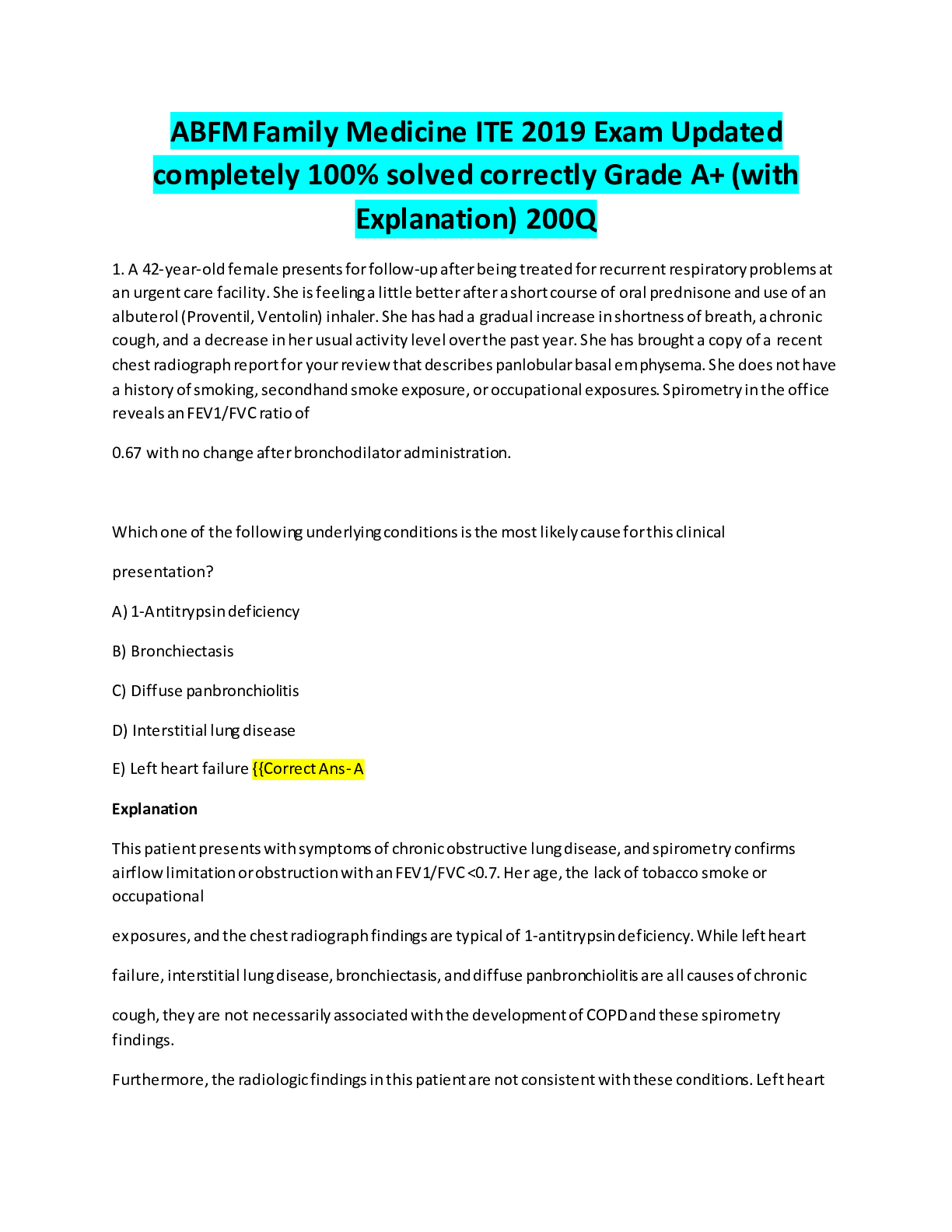
 ITE 2018.png)
